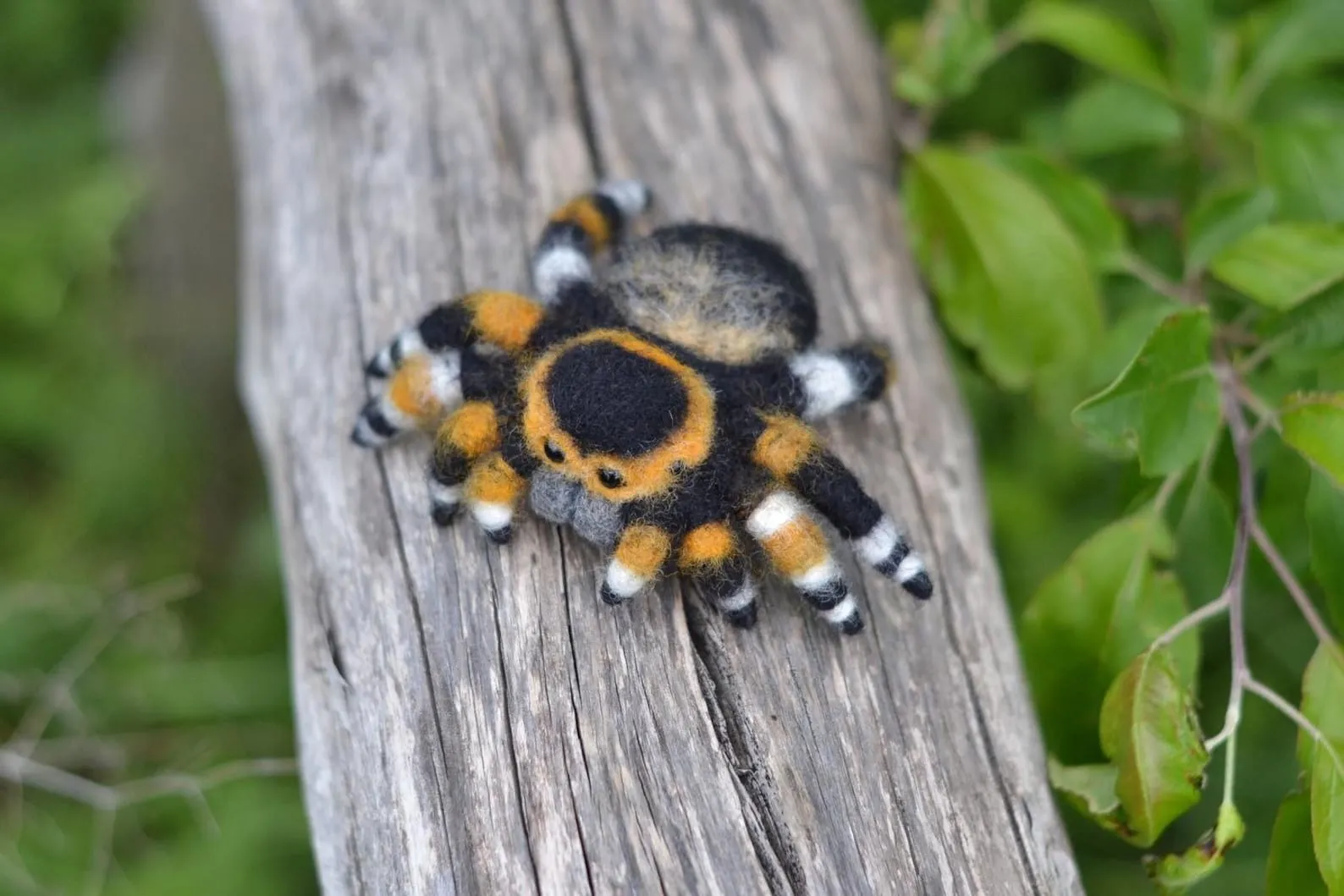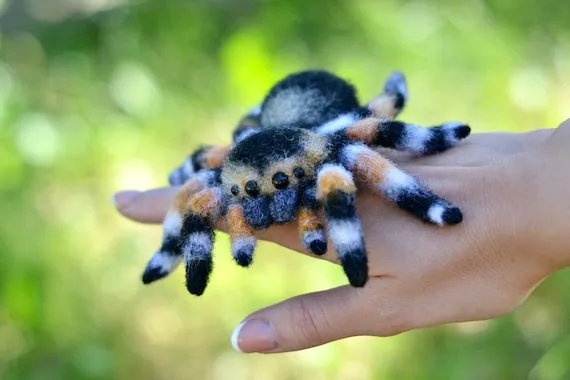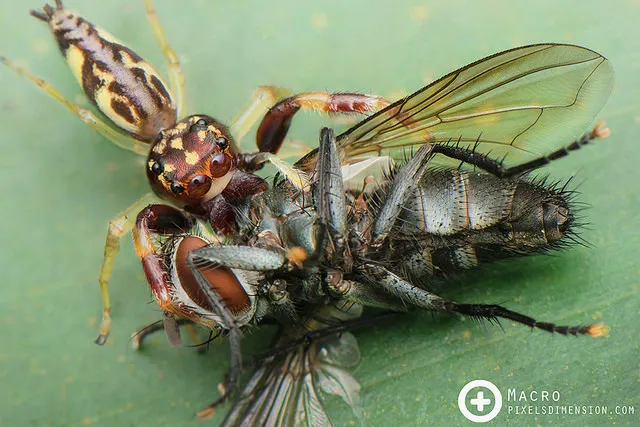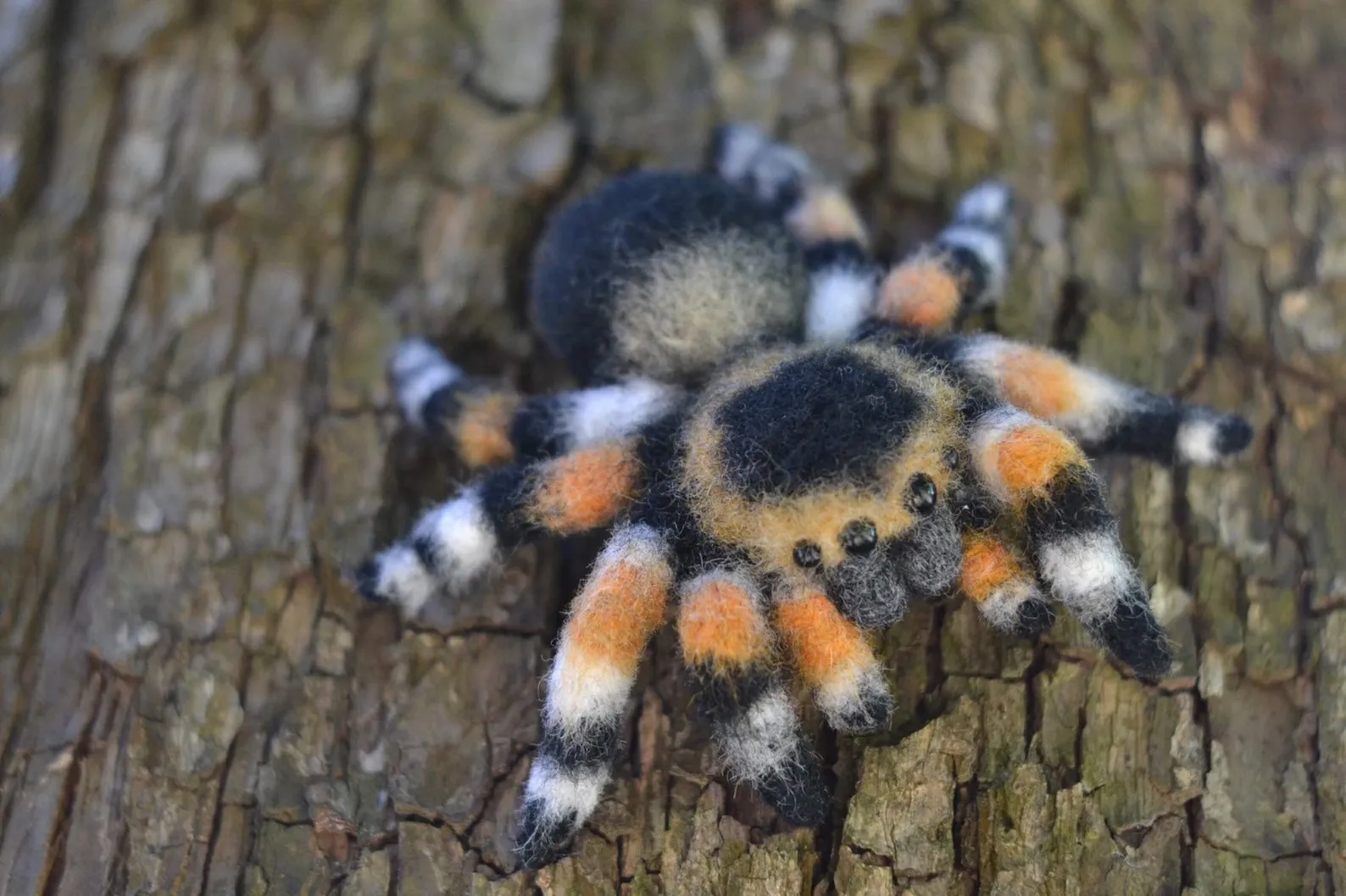Appearance Jumping Spider vs Tarantula
When comparing a jumping spider vs tarantula, the most immediate difference lies in their appearance. These two arachnids, while both spiders, possess distinct physical characteristics that allow for easy identification. Understanding these differences is crucial for anyone interested in these creatures, whether for observation, pet ownership, or simply curiosity. The variations in size, body shape, and coloration are key indicators that set them apart. One is small and agile, while the other is large and imposing. These are the fundamentals of appearance that set the stage for further exploration into their contrasting worlds. This comparison helps in appreciating the diversity within the spider family.
Jumping Spider Appearance
Jumping spiders are renowned for their compact size and remarkable agility. They typically range from 1 to 25 millimeters in length, with many species showcasing vibrant colors and patterns. Their bodies are characterized by a distinct cephalothorax (fused head and chest) and abdomen, often covered in a fine layer of hair. The most striking feature is their large, forward-facing eyes, providing them with excellent vision, essential for hunting. Their legs are relatively short and robust, ending in claws that allow them to grip surfaces with ease. Their ability to jump is enabled by hydraulic mechanisms within their legs, allowing for incredible leaps relative to their size. This specialized feature is a primary difference when observing a jumping spider vs tarantula.
Tarantula Appearance

Tarantulas, on the other hand, are substantially larger, with some species having a leg span of over 10 inches. Their bodies are robust and heavily built, covered in dense hairs that can vary in color from browns and blacks to vibrant hues. Unlike jumping spiders, tarantulas have a more elongated body shape. Their chelicerae, or mouthparts, are prominent, equipped with large fangs used for injecting venom. They also have pedipalps, which resemble small legs, near their mouth. These features are crucial in distinguishing them from their smaller counterparts. The overall impression of a tarantula is one of size and power, a stark contrast when looking at a jumping spider vs tarantula.
Size and Habitat of Jumping Spiders and Tarantulas
The size and habitat of jumping spiders and tarantulas provide another key area of contrast. These differences influence their behavior, hunting strategies, and overall lifestyles. Understanding where these arachnids live and how their size impacts their interactions with the environment is essential. The contrast is clearly evident when comparing the diminutive jumping spider vs the much larger tarantula, each adapted to its unique ecological niche. Their size and habitat preferences are directly linked to their survival and role in their respective ecosystems. The diversity in habitats reflects the adaptability of these creatures.
Size of Jumping Spiders
Jumping spiders are notably small, typically ranging from 1 to 25 millimeters in length. This small size allows them to thrive in various environments. They can navigate through dense vegetation and crevices. Their diminutive stature is a significant advantage, enabling them to hunt small prey with agility. The size also makes them less conspicuous to predators. Their ability to inhabit diverse habitats, from forests to urban gardens, is partly due to their small size. This contrast with the larger tarantulas is stark. Their size dictates many aspects of their lives, including their hunting style and defensive strategies.
Tarantula Habitat

Tarantulas, being much larger, require different habitats. They are often found in burrows or under rocks and logs. The size of a tarantula makes it less mobile than a jumping spider. Many tarantula species are terrestrial, while others may be arboreal, living in trees. Their habitat must provide adequate space for their size. The choice of habitat is influenced by their need for shelter, protection from predators, and access to prey. This includes the presence of appropriate ground conditions for burrowing or suitable trees for arboreal species. Their larger size requires a larger territory.
Temperament and Behavior
The temperament and behavior of jumping spiders and tarantulas differ significantly, influencing their interactions with both their environment and humans. These differences are fundamental to understanding the unique characteristics of each type of spider. Their behaviors are closely linked to their physical attributes, such as size, vision, and hunting techniques. Observing their temperament provides valuable insight into their survival strategies and how they interact within their respective ecosystems. The behavior is a central point when considering a jumping spider vs tarantula.
Jumping Spider Temperament
Jumping spiders are known for their curious and active nature. They are generally considered to be docile, though they are always alert. Their excellent vision allows them to actively hunt, stalking their prey with precision. They often exhibit inquisitive behavior, turning their heads to observe their surroundings. They are not aggressive spiders and are generally not inclined to bite unless provoked. Their behavior is a stark contrast to the more cautious and sometimes defensive behavior seen in tarantulas. They are fascinating to observe.
Tarantula Temperament

Tarantulas, while generally not aggressive, can be defensive. They may display threatening postures, such as rearing up or flicking hairs (in some species), when feeling threatened. Their behavior often involves caution and a preference for avoiding confrontation, retreating to their burrows if possible. However, they can bite if provoked. Their temperament is influenced by their size and their reliance on their burrows for shelter. The defensive behavior is an important consideration when considering a tarantula vs a jumping spider.
Venom and Bite
The topic of venom and bites is crucial when discussing the potential risks associated with jumping spiders and tarantulas. Understanding the toxicity of their venom and the impact of their bites is essential for anyone interacting with these arachnids. The effects of a bite can vary depending on the species, size of the spider, and the sensitivity of the individual bitten. These details are vital for responsible pet ownership and safety when encountering these spiders. The information helps to understand the risks involved, especially when considering a jumping spider vs tarantula.
Jumping Spider Bite
Jumping spiders have venom, but their bites are generally not considered dangerous to humans. Their fangs are small, and their venom is not potent enough to cause significant harm. The bite may cause a mild, localized reaction, similar to a mosquito bite. However, allergic reactions are possible, although rare. Typically, a bite from a jumping spider is more of a surprise than a medical concern. Therefore, the potential for serious harm from a jumping spider bite is minimal.
Tarantula Bite

Tarantulas, being larger, have larger fangs and can deliver a more significant bite. Their venom is generally not considered lethal to humans. However, the bite can be painful, and the area may become red and swollen. Some individuals may experience more severe reactions, such as muscle cramps or nausea. The severity of a tarantula bite varies depending on the species and the amount of venom injected. Also, some tarantulas have urticating hairs that they can flick to cause irritation. Medical attention is usually not required for a tarantula bite, but monitoring for any adverse reactions is advisable.
Care and Handling
The care and handling of jumping spiders and tarantulas require different approaches, reflecting their varying needs and temperaments. Understanding the specific requirements of each spider is vital for ensuring their well-being and safety. Providing the correct environment, food, and handling techniques is essential for responsible pet ownership. The contrast in care methods highlights the differences between the tiny, active jumping spider and the larger, more cautious tarantula. The differences in their care needs is one of the key things to keep in mind when considering a jumping spider vs a tarantula.
Jumping Spider Care
Jumping spiders can be kept in relatively small enclosures. They need a terrarium with ventilation, a substrate, and some decorations. Provide branches or plants for them to climb and explore. They eat small insects, such as fruit flies or pinhead crickets. Maintaining the right humidity is essential, often achieved through misting the enclosure. Handling is generally not required, as they are small and fragile. Their care is relatively straightforward, making them a good choice for beginners. The need for proper care highlights the considerations for a jumping spider vs tarantula.
Tarantula Care

Tarantulas require larger enclosures with appropriate substrate for burrowing or climbing. They need a water dish and a temperature gradient to thrive. Provide them with hides, such as cork bark, for security. Their diet consists of larger insects, such as crickets and roaches. Handling should be done with caution, as they can be defensive. Proper handling and care is vital for avoiding bites. Their care is more demanding compared to jumping spiders, requiring greater attention to detail. This illustrates the contrast in care requirements between a tarantula vs a jumping spider.
